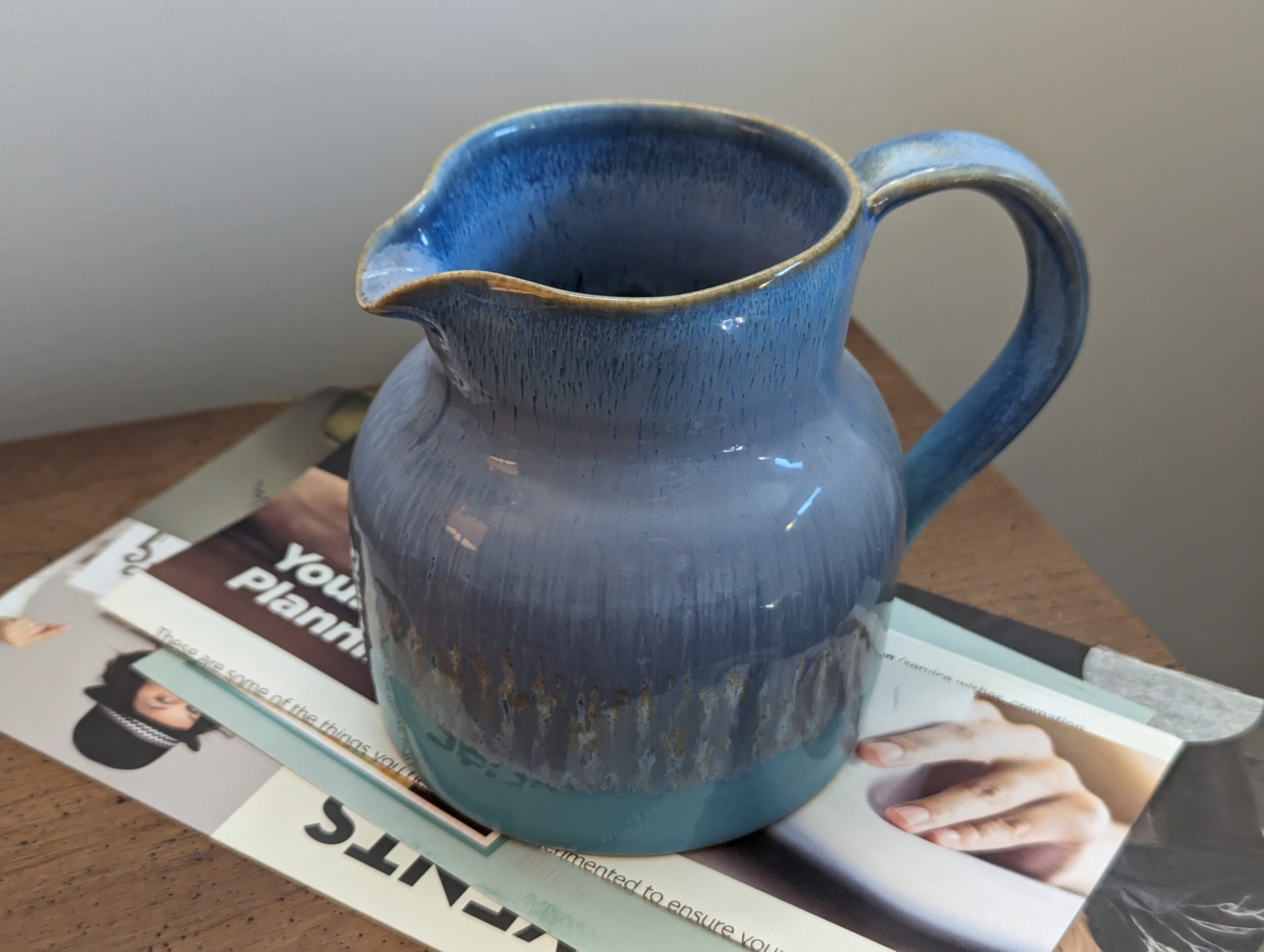Years ago, when I was learning how to make pottery, I really wanted to throw like the big kids (who, in this situation, were actually adults who had been practicing pottery longer than me). In pottery-speak, “throwing” on a pottery wheel is one way of making things that are round, like plates, cups, and bowls. I wanted to throw big or go home! But instead of throwing big, my teacher started my beginners’ class by handing out small quarter-pound pieces of clay and teaching us to throw small.
We started with saucers and then moved on to cylinders that were so tiny I didn’t know what to call them. The cylinders certainly weren’t cups, and neither were they vases. They were just…cylinders. I ended up story bobby pins in them.
One day, while at the studio by myself, I cut a five-pound chunk of clay from the larger block shared by all students. After slapping it onto the pottery wheel, I set the wheel spinning and threw my weight into the clay. With all the strength I could muster, I wrestled the clay and got it centered. Then, I bore a hole in the center and began to pull the clay upward. In my mind’s eye, I could see the pitcher I wanted–the useful item I was determined to throw instead of the silly, dollhouse items I had been throwing in class. With just enough strength and focus, I would get what I wanted. Or so I thought.

After struggling for some time to make the “pitcher” grow in height, I settled for what I had in front of me: a short, squat, vessel that kind of had the form of a pitcher. I told myself I had been successful because I had made more than a cylinder, and then I set the pitcher on the shelf to be fired.
Some days later, I returned to the studio to retrieve my fired pitcher and glaze it before a second firing. While there, I ran into one of the studio owners. “You’re starting to throw larger things!” she said.
“Yes! I felt like I was ready and decided to finally give it a try,” I said, feeling proud that someone had noticed my efforts.
And then, kindly and firmly, the studio owner said, “Please don’t do that again. In the future, maybe. But not now.”
Admittedly, I was a little confused. Wasn’t I supposed to be pushing myself? Wasn’t the goal to make things like pitchers for water and bowls for salad and mugs for the large quantity of tea I need to get my day started? Well, yes. That was the goal. But as the studio owner explained while holding my “pitcher,” I didn’t yet have the strength or skill to throw five pounds of clay. Most of those five pounds sat at the bottom of the pitcher, which meant that the pitcher couldn’t hold much liquid. In reality, it was a better paperweight than a pitcher.

That day at the studio, I was encouraged to get good at being a beginner. To get comfortable with being in the beginning stages of a learning process so as to not miss the opportunity to lay solid foundation for all the learning that would come later.
This, I realized, was also a good lesson to learn for life! At the studio, getting good at being a beginner looked like throwing more tiny cylinders and saucers until my strength and skill had truly improved. In life outside of the studio, getting good a being a beginner has looked different and changed through the seasons of life. It’s looked like regularly practicing 15 minutes of mindfulness and not comparing myself to people who practice for longer. It’s looked like trying a new hobby instead of avoiding the discomfort of not knowing something. It’s looked like taking the risk of starting new relationships. It’s looked like giving myself permission to change an unhelpful behavior gradually instead of feeling bad that I change it all at once.
No person is born an expert in anything that isn’t instinctive. We start our lives as beginners, and then somewhere along the way, many of us (myself included!) forget that, even as adults, we need to be beginners from time to time. The fact is, we grow when we get good at being beginners, not when we act like experts and have no foundation.
In my home, I still have both the paperweight pitcher and the tiny cylinders. Anyone want to guess which one I use everyday? One of the cylinders. It sits in my bathroom, still holding my bobby pins, while the pitcher is relegated to a shelf. While collecting dust, it reminds me that being a beginner is good.

